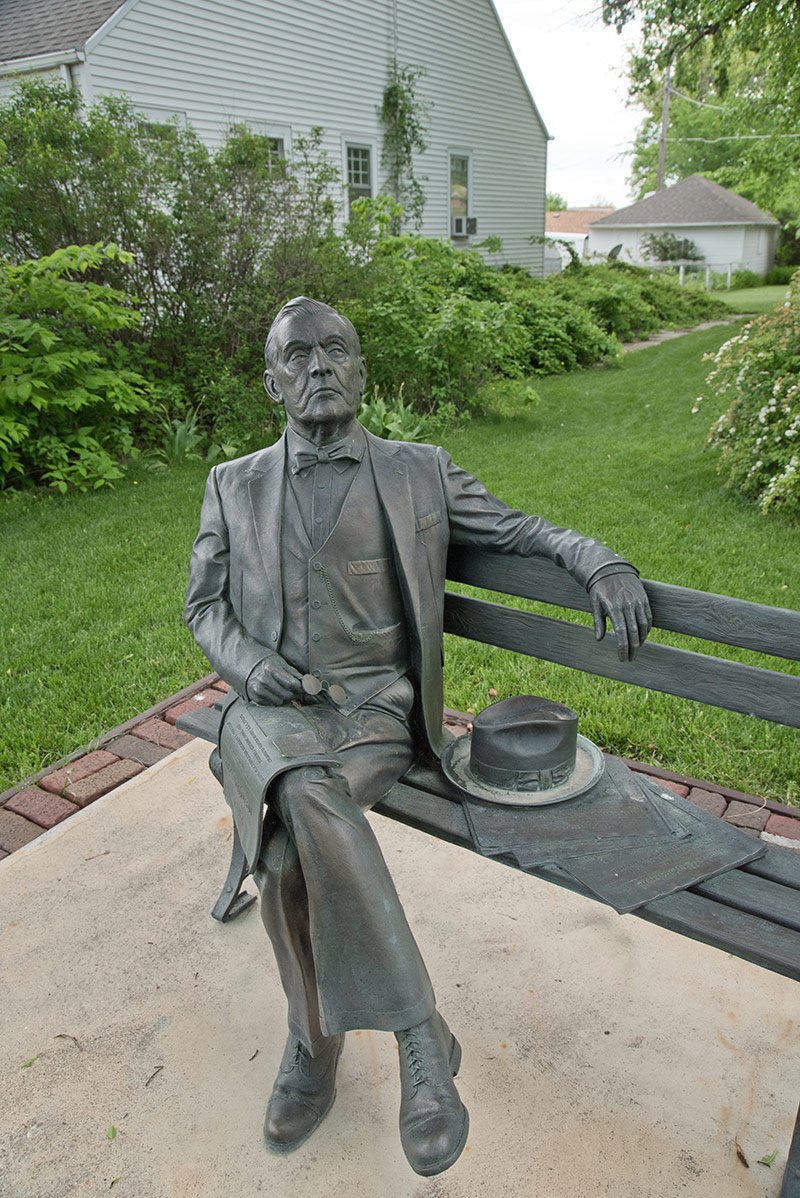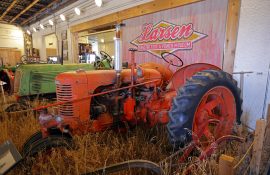
Lester F. Larsen Tractor Test & Power Museum
The Lester F. Larsen Tractor Test & Power Museum is located on the East ...
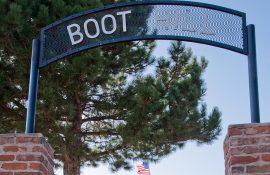
Boot Hill Cemetery
Rough cowhands and opportunistic criminals flooded the community of Ogallala in the 1870s. Lives ...
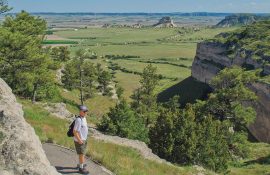
Scotts Bluff National Monument
Scotts Bluff National Monument stands 800 feet above the North Platte River. The monolith served ...
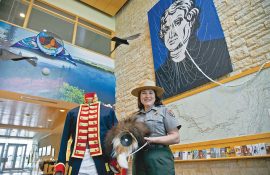
Lewis and Clark National Historic Trail Headquarters
Lewis and Clark National Historic Trail Headquarters is located inside the National Park Service’...

Holy Family Shrine
Passing travelers stare with wonder toward Holy Family Shrine south of I-80 Exit 432 at ...
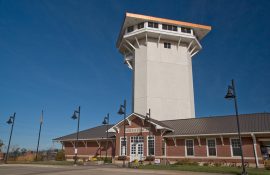
Golden Spike Tower and Visitor Center
The Guinness Book of World Records recognized the Bailey Yard in 1995 as the world’...

Nebraska History Museum
The Nebraska History Museum in Lincoln preserves the history of our state's storied past. ...

The Joslyn Castle
The Joslyn Castle, one the state’s greatest homes, still stands near 39th and ...
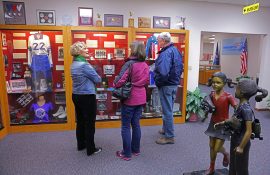
National Museum of Roller Skating
The National Museum of Roller Skating in Lincoln is home to the world’s ...

Kregel Windmill Factory Museum
Windmills are still part of the present-day Nebraska landscape. At the Kregel Windmill Factory ...

Rose Colored Glass
Many interesting businesses make their homes in Stromsburg, and a bunch are on that ...
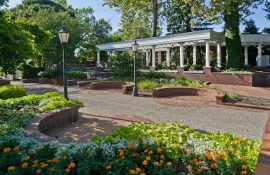
President Gerald R. Ford Birthsite and Gardens
President Gerald R. Ford Birthsite and Gardens honors the country’s 38th President. Born ...

Sandhills Journey Scenic Byway Visitor Center
The historic red barn on Broken Bow’s eastern edge was once a big ...

Ash Hollow State Historical Park
Ash Hollow State Historical Park preserves pioneer history three miles southeast of Lewellen on ...

Joslyn Art Museum
The Joslyn Art Museum houses more than 11,000 works spanning from ancient to present times ...
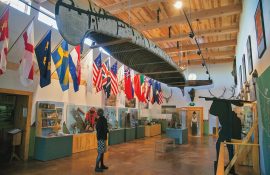
Museum of the Fur Trade
The Museum of the Fur Trade is located on a historic trading post site ...

Nebraska City Museum of Firefighting
The Nebraska City Museum of Firefighting preserves artifacts from Nebraska City’s original 1856 bucket ...

Little House Museum
The Little House Museum in Stratton’s Pitner Park is located inside a historic ...
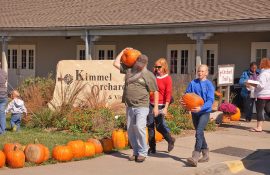
Historic Kimmel Orchard & Vineyard
The Historic Kimmel Orchard & Vineyard features 40 acres of u-pick produce. Visitors harvest strawberries ...

Madison County Historical Society
The Madison County Historical Society formed in 1928. The current museum opened in 1998 in a ...

Dodge County Historical Society’s May Museum
The Dodge County Historical Society’s May Museum was the 1874 home of Fremont businessman ...
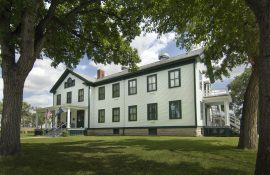
Fort Robinson History Center
A great place to learn about Fort Robinson's storied history from Native American days ...

Filley Stone Barn
The Filley Stone Barn is quite a sight to see 12 miles east of Beatrice. ...
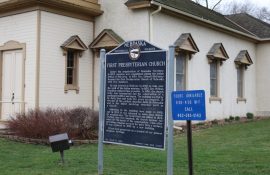
Old First Presbyterian Church
The Old First Presbyterian Church in Bellevue is Nebraska's oldest surviving church. It was ...

Sturdevant-McKee Museum
Brantly and Ellen Sturdevant built their Queen Anne style home in Atkinson in 1887. Today ...

Lake McConaughy Visitors Center and Water Interpretive Center
The Lake McConaughy Visitors Center and Water Interpretive Center has been called a water ...

Knight Museum and Sandhills Center
Exhibits at the expansive Knight Museum and Sandhills Center span many aspects of Western ...

John Philip Falter Museum
The John Philip Falter Museum celebrates a local boy made good. As a child ...
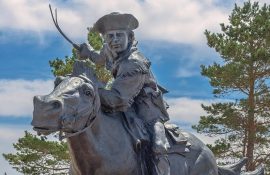
National Pony Express Memorial
The exact location of the Pony Express station once located near Sidney is unknown. ...

Pony Express Station Museum
The Pony Express Station Museum is housed in the Sam Macchette Station in Gothenburg. ...
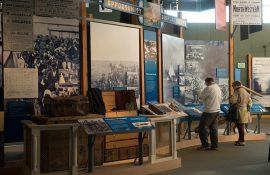
Gage County Historical Society Museum
It's all about history at the Gage County Historical Society Museum in Beatrice. The ...
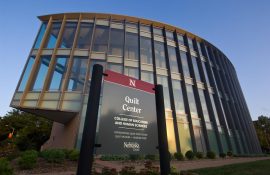
International Quilt Study Center & Museum
The International Quilt Study Center & Museum welcomes guests with a reception hall shaped ...
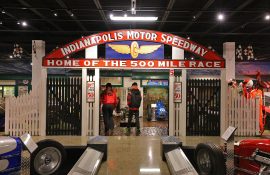
Museum of American Speed
The Museum of American Speed in Lincoln was founded in 1992 by “Speedy” Bill and ...
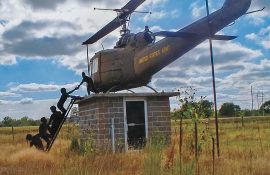
Heartland Museum of Military Vehicles
A helicopter sits near a large pond at Interstate 80 Exit 237. The whirly bird is ...

Oak Ballroom
The Oak Ballroom in Schuyler was built in 1937 and is on the National Register ...
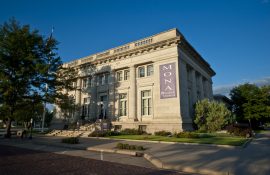
Museum of Nebraska Art (MONA)
The Museum of Nebraska Art in Kearney is home to the state’s official ...

Seven Valleys Museum
The community of Callaway has accumulated a lot of history in its more than 130 ...

Big Springs Depot Museum
The Big Springs Depot Museum will reopen in 2017 following repairs and renovations. Be among ...

Norfolk Arts Center
The Norfolk Arts Center serves as an important cultural resource for the northeast corner ...

Olde Glory Theatre and Community Hall
The Olde Glory Theatre and Community Hall hosts theatrical productions and community events in ...

Thomas P. Kennard State Historic Site
This former home of Nebraska's first secretary of state, Thomas P. Kennard, is considered ...

Old Freighter’s Museum
The Old Freighter’s Museum preserves Nebraska City's legacy of transporting goods during the ...
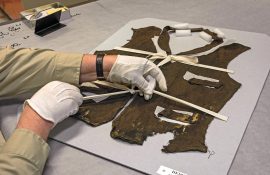
DeSoto Bend National Wildlife Refuge
DeSoto Bend National Wildlife Refuge is located six miles east of Blair on the ...
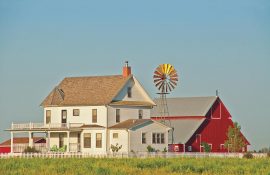
Wessels Living History Farm
A red timber-frame barn and windmill welcome visitors to the Wessels Living History Farm ...

Depot Museum
The Depot Museum at the corner of Bates Boulevard and McCall Street tracks Lodgepole’...

Wildwood Historic Center
The Wildwood Historic Center is located in Nebraska City and includes a 10-room mansion ...
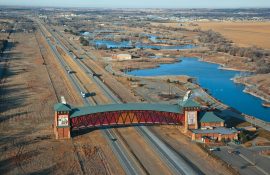
The Archway
The Archway, built in 1999, pays tribute to the pioneers who trekked across the country ...
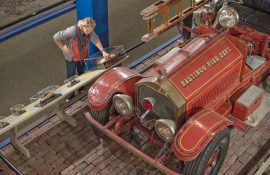
Hastings Museum
While museums should contain old history, and Hastings Museum does, there are new experiences ...

Log Cabin and Prairie Schooner Museums
The Log Cabin and Prairie Schooner Museums can be found in North Park in ...
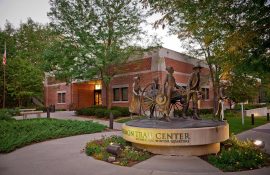
Mormon Trail Center at Historic Winter Quarters
The Mormon Trail Center at Historic Winter Quarters marks the location of the Mormons’ ...

Sioux Ordnance Depot
Nearly 2,000 people worked at the Sioux Ordnance Depot 10 miles northwest of Sidney during its ...
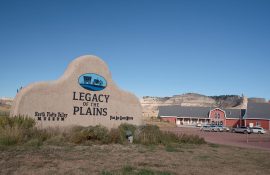
Legacy of the Plains Museum
The Legacy of the Plains Museum in Gering is located adjacent to Scotts Bluff ...

Hastings Ammunition Depot
At one point during World War II, the Hastings Ammunition Depot was producing 40 percent ...
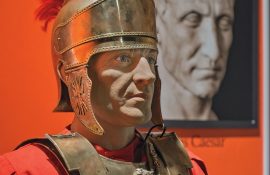
Clayton Museum of Ancient History
The Clayton Museum of Ancient History is a treasure that could be home in ...
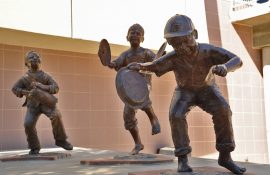
Lincoln Children’s Museum
More than 23,000 square feet of interactive exhibits and educational adventures await young learners at ...

Chase County Historical Museum
The Chase County Historical Museum has more than 1,800 artifacts from as far back as ...
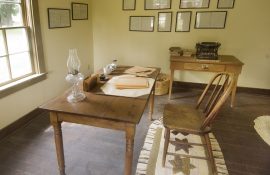
John Neihardt State Historic Site
The Nebraska State Historical Society preserves the Bancroft home where John Neihardt lived from 1900 ...

Fort Atkinson State Historical Park
Fort Atkinson State Historical Park includes reconstructed barracks, an armorer’s shop and a ...

Fred G. Dale Planetarium
The Fred G. Dale Planetarium at Wayne State College in Wayne has had students ...

Mayhew Cabin & John Brown’s Cave
The Mayhew Cabin & John Brown’s Cave in Nebraska City offers a chance ...

Lewis & Clark Missouri River Visitors Center
Nebraska City was terra incognita when explorers Lewis and Clark camped along the Missouri ...

Custer County Museum
The only remaining fragment of the Native American bow that Broken Bow is named ...
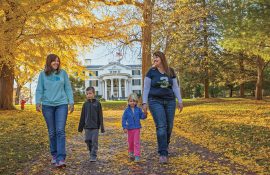
Arbor Lodge State Historical Park
Arbor Lodge State Historical Park in Nebraska City is where Arbor Day was born. ...

Potter State Bank
The historic Lincoln Highway Scenic Byway runs east to west on Potter’s southern ...
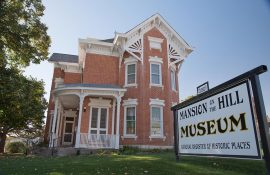
Mansion on the Hill Museum
L.A. Brandhoefer used locally-produced red bricks to build a mansion overlooking Ogallala in 1887. ...

Museum of Missouri River History
The Museum of Missouri River History in Brownville is located just south of U....
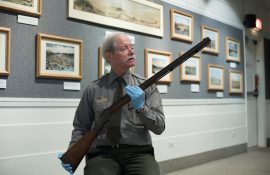
Oregon Trail Museum and Visitor Center
The Oregon Trail Museum and Visitor Center is located at the base of Scotts ...

Cherry County Historical Society Museum
The Cherry County Historical Society Museum showcases exhibits on the history of ranching, the ...

Mueller Planetarium
The Nebraska State Museum at the University of Nebraska-Lincoln's Morrill Hall is home to ...
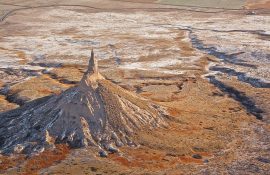
Chimney Rock National Historic Site
Chimney Rock rises 480 feet above the rocky plains near Bayard. Resembling an upturned funnel, ...

Little Church of Keystone
The Little Church of Keystone was built in 1908 to serve the community’s Catholic ...

First National Sculpture Parks
The First National Sculpture Parks stretch across six blocks of downtown Omaha near the ...
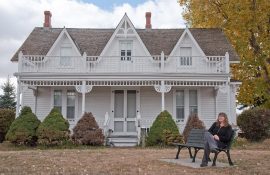
Trails and Rails Museum
The Trails and Rails Museum in Kearney is located on the old Mormon Trail. ...

Civil War Veterans Museum
The Civil War Veterans Museum in Nebraska City is housed in a former Grand ...

River Country Nature Center
Nebraska’s ecosystems converge in this educational and entertaining facility in Nebraska City. The ...
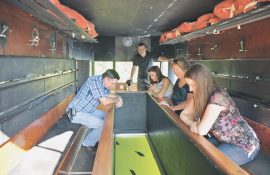
Fort Kearney Museum
The Fort Kearney Museum spells Kearney like the city does, unlike the name of ...
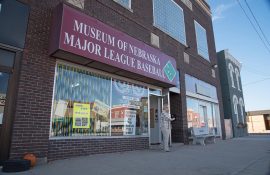
Museum of Nebraska Major League Baseball
Baseball buffs score with visits to the Museum of Nebraska Major League Baseball in ...
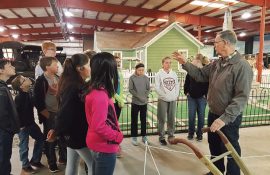
Plainsman Museum
The Plainsman Museum in Aurora, pop. 4,500, has an authentic log cabin originally built north ...

Cody Park and Railroad Museum
William F. "Buffalo Bill" Cody is memorialized at Cody Park in North Platte. In 1998, ...
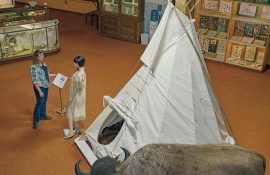
Nebraska Prairie Museum
Swedish immigrants from Illinois arrived by wagon and horseback to found Holdrege in the 1880...

Lincoln County Historical Museum
The North Platte Canteen is commemorated at the Lincoln County Historical Museum. The World ...
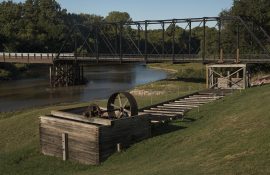
Neligh Mill State Historic Site
This historical site in Neligh preserves the history of Nebraska milling. See original 1880s ...

Richardson County Military History Museum
The Richardson County Military History Museum was the vision of former Falls City mayor ...
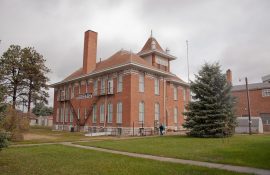
Centennial Hall Museum
Centennial Hall, erected in 1897, is the oldest standing high school building in Nebraska. It ...

Classic Car Collection
One of Kearney’s newest attractions is the Classic Car Collection, and the name ...

Schuyler/Colfax County Museum
Decades before Schuyler’s 1870 founding, Mormon Trail pioneers passed along what is now the ...

Phelps Hotel
The Phelps Hotel was built in 1885, but this place is no museum. All these ...

Rock Island Depot Museum
The Rock Island Depot Museum in Fairbury was once the western division headquarters for ...

Auburn Post Office Mural
A mural commissioned by President Roosevelt’s Works Progress Administration still adorns the Auburn ...

Andrew Jackson Higgins Memorial
The Andrew Jackson Higgins Memorial in Columbus pays homage to a local man who ...
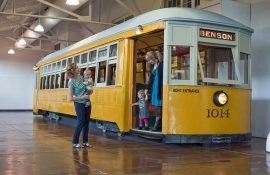
The Durham Museum
The Durham Museum, located in the former Union Station, preserves Omaha’s prosperous railroad ...

Didier Log Cabin
The Didier Log Cabin offers the chance to step inside pioneer history in Brownville's ...

Nebraska National Guard Museum
After moving military vehicles and more than 11,000 artifacts from Lincoln to Seward, the new ...

General Crook House Museum
Fort Omaha’s former commanding officer quarters have been preserved as the General Crook ...
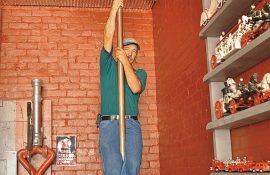
Tubby’s Firehouse Museum
Tubby’s Firehouse Museum in St. Paul includes firefighter Ron Tubbs’ lifetime collection of ...

Massacre Canyon Monument and Visitor Center
The last large-scale battle between two Native American tribes in the United States occurred ...
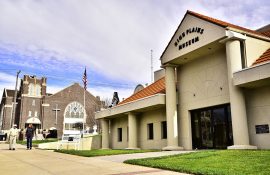
Museum of the High Plains and Carnegie Library
The Museum of the High Plains in McCook has one thing that most museums ...

Agate Fossil Beds National Monument
Agate Fossil Beds National Monument is considered one of the world’s most significant ...

Chautauqua Pavilion
The Chautauqua Pavilion in Hasting's Chautauqua Park was built in 1907 to host traveling events. ...

Nelson House
The Nelson House in Nebraska City is one of the oldest houses in the ...

White Horse Museum and Heritage Village
A team of 24 pure white horses from north of Stuart performed across the United ...
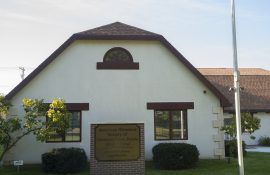
American Historical Society of Germans from Russia Museum
The American Historical Society of Germans from Russia Museum in Lincoln showcases the mass ...

Children’s Museum of Central Nebraska
The Children’s Museum of Central Nebraska in Hastings stimulates young brains with interactive ...
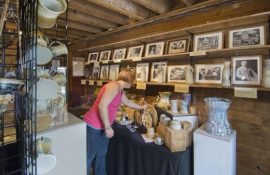
Florence Mill
Brigham Young oversaw the building of Florence Mill in 1846 for the Mormon's Winter Quarters ...
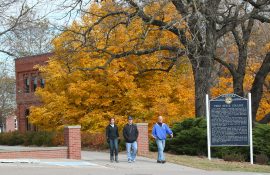
Peru State College
The small town of 600 residents at Peru swells by approximately 2,500 people every fall when ...

The Bar
The Bar in Unadilla may not have a fancy name, but don't let that ...
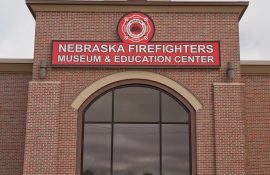
Nebraska Firefighters Museum & Education Center
The Nebraska Firefighters Museum & Education Center is another Kearney hot spot. Just west ...

Legion Memorial Park
Legion Memorial Park in Auburn showcases red granite boulders from Nemaha County quarries and ...

Great Plains Art Museum
The Great Plains Art Museum is located inside the University of Nebraska-Lincoln's Center for ...
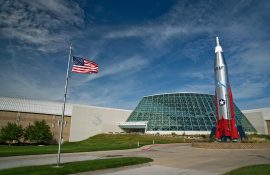
Strategic Air Command & Aerospace Museum
The Strategic Air Command & Aerospace Museum is a 300,000 square-foot landmark studded with ballistic ...

Holt County Historical Museum
Moses Kinkaid was an early O'Neill lawyer and politician. He laid the groundwork for ...

Boettner Park
Boettner Park in Brownville is a prime location for gatherings and festivals. The park ...

Mari Sandoz High Plains Heritage Center
The Mari Sandoz High Plains Heritage Center on the Chadron State College campus immerses ...
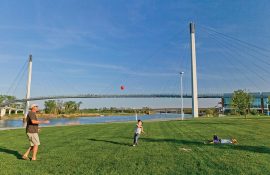
Lewis and Clark Landing
Lewis and Clark Landing spans 23 acres along the Missouri River near downtown Omaha. A ...

Fort Sidney Complex
Sidney Barracks was built in 1867 to provide security for railroad workers. In 1870 the post ...
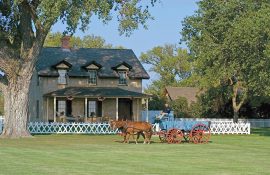
Fort Hartsuff State Historical Park
Fort Hartsuff State Historical Park is a restored 1870s frontier fortress built when settlers ...
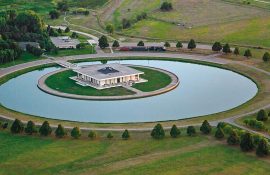
Stuhr Museum of the Prairie Pioneer
The rich pioneer history of Grand Island and Hall County is preserved on an ...

Sheldon Museum of Art
The Sheldon Museum of Art in Lincoln houses nearly 13,000 pieces of art inside a ...

Valley County Museum
The Valley County Museum at 117 S. 16th St. keeps area pioneer, military and agricultural ...
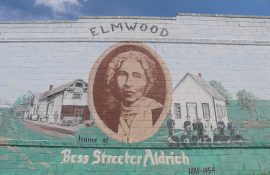
Bess Streeter Aldrich House
The Bess Streeter Aldrich House preserves the 24-year period in which Aldrich lived and ...

Kearney Area Children’s Museum
Kearney has a museum that is just for kids! Every display in the Kearney ...

Fairbury City Museum
The Fairbury City Museum preserves the local history of Fairbury and Jefferson County. The ...

Elkhorn Valley Museum
The Elkhorn Valley Museum in Norfolk contains items unlikely to be seen elsewhere. In ...
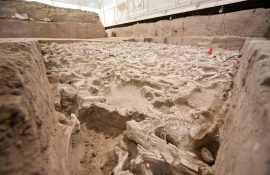
Hudson-Meng Education & Research Center
The Hudson-Meng Education Center is located within the Oglala National Grassland near Crawford. The ...
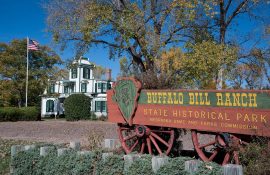
Buffalo Bill Ranch State Historical Park
Buffalo Bill Ranch State Historical Park at the northeast edge of North Platte showcases ...

Heritage Highway Scenic Byway
The Heritage Highway Scenic Byway stretches 238 miles east-west on U.S. Highway 136 starting in ...
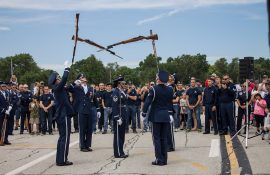
Offutt Air Force Base
The sound of freedom roars daily from jet engines at Offutt Air Force Base ...

Henderson Mennonite Heritage Park
Henderson Mennonite Heritage Park celebrates the town's German Mennonite roots and features a replica ...

Brownville Main Street
Brownville's Main Street is a destination all by itself. Charming, modern and historical all ...

Arbor Day Farm
Arbor Day Farm is home to the one-of-a-kind Tree Adventure, Arbor Lodge State Historical ...
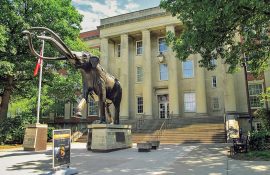
University of Nebraska State Museum
The Nebraska State Museum at the University of Nebraska-Lincoln is known as Morrill Hall ...

Stone Church
The Stone Church, on Highway 17 and County Road 710, nine miles south of Culbertson, is ...
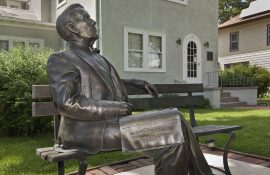
Sen. George Norris State Historic Site
Senator George Norris served 40 years in Congress and was considered a "champion in the ...

Washington County Historical Museum
Staff at the Washington County Historical Museum in Fort Calhoun proudly proclaim it as ...

Bob Kerrey Pedestrian Bridge
The Bob Kerrey Pedestrian Bridge delivers a bird’s-eye view of the Missouri River ...


